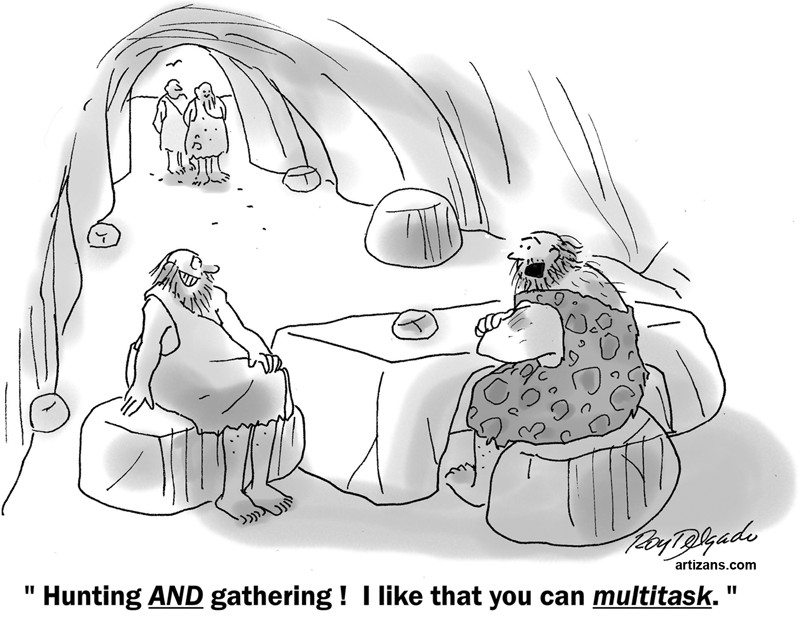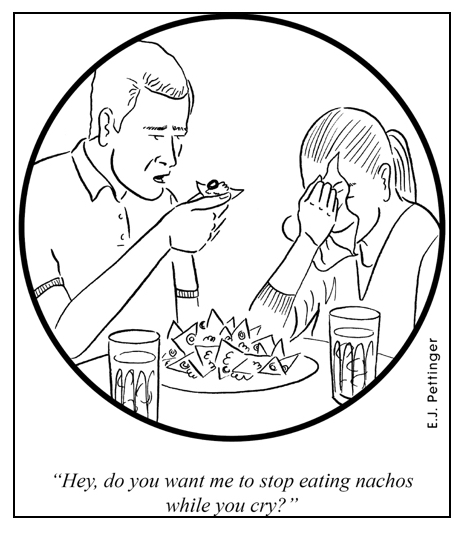 What information consumes is attention. A wealth of information means a poverty of attention. Herbert A. Simon, cognitive scientist
What information consumes is attention. A wealth of information means a poverty of attention. Herbert A. Simon, cognitive scientist
We are inundated with bits of information—emails, text messages, phone calls, snippets of news—and they all distract us from focused thought and work. We pride ourselves on being able to negotiate multiple, disparate tasks simultaneously. Multitasking has become a badge of honor in a chaotic world.
But multitasking is a myth. Physiologically, it’s not possible.
In their must-read-book Altered Traits, Goleman and Davidson write:
“Many denizens of the digital world pride themselves on being able to multitask, carrying on their essential work even as they graze among all the other incoming bits of information. But compelling research from Stanford University has shown that this very idea is a myth—the brain does not ‘multitask’ but rather switches rapidly from one task to others.
“Attention tasks don’t really go on in parallel; instead they demand rapid switching from one thing to the other. And following every such switch, when our attention returns to the original task, its strength has been appreciably diminished. It can take several minutes to ramp up once again to full concentration.
“The harm spills over into the rest of life. For one, the inability to filter out the noise (all those distractions) from the signal (what you want to focus on) creates a confusion about what’s important, and so a drop in our ability to retain what matters. Heavy multitaskers are more easily distracted in general. And when multitaskers do try to focus on that one thing they have to get done, their brains activate many more areas than just those relevant to the task at hand” [Altered Traits, Goleman and Davidson, page 137].
Here’s a simple application of this insight: People cannot read and listen at the same time.
In the past, while teaching a seminar, I would distribute a handout to the students and then begin to talk while they read the handout. I realize now that they weren’t listening to me because no one can read and listen at the same time.
Here’s a simple way to develop extended focus.
Most smartphones have a timer. Set it for a certain amount of time and focus exclusively on one thing, ignoring all distractions. Also use the timer to measure spans of time during which you allow your mind to respond to “distractions”—disparate things that need to be addressed.
Proponents of meditation value the trait of mindfulness because it strengthens the brain’s ability to focus on one thing and ignore distractions [see Altered Traits, page 131].
[reminder]What are your thoughts about this essay?[/reminder]
[callout]In October 2018 I’m hosting a trip to the three great cities of the western world: London, Paris, Rome. (We’ll also visit Lisbon, Barcelona, and Florence.) The trip is limited to 40 guests. Only two slots remain. Click here for more information.[/callout]

 Give me enough ribbons to place on the tunics of all my soldiers and I can conquer the world. Napoleon
Give me enough ribbons to place on the tunics of all my soldiers and I can conquer the world. Napoleon There are many opinions on what these three terms mean and how they relate to each other. Here are my thoughts.
There are many opinions on what these three terms mean and how they relate to each other. Here are my thoughts. I recently listened to a podcast in which Sam Harris interviewed Christian Picciolini who, at age 14, became a member of a neo-Nazi white supremacy movement. After only one chance meeting with a recruiter he went from the childhood pastime of trading baseball cards to shaving his head and tattooing swastikas on his body. For the next eight years he sank deep into a culture of hate and criminal behavior.
I recently listened to a podcast in which Sam Harris interviewed Christian Picciolini who, at age 14, became a member of a neo-Nazi white supremacy movement. After only one chance meeting with a recruiter he went from the childhood pastime of trading baseball cards to shaving his head and tattooing swastikas on his body. For the next eight years he sank deep into a culture of hate and criminal behavior.